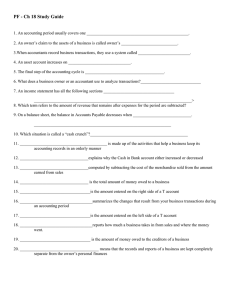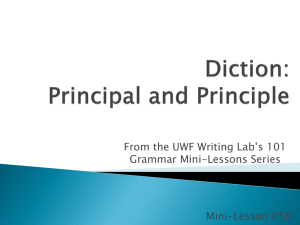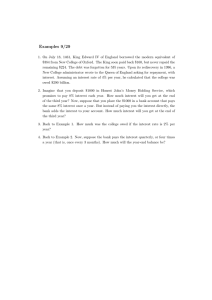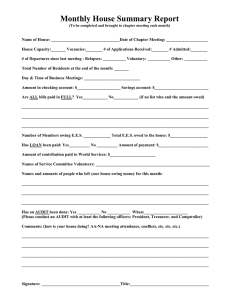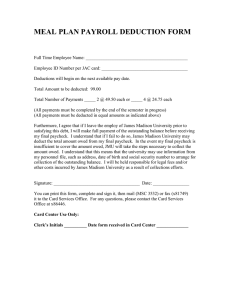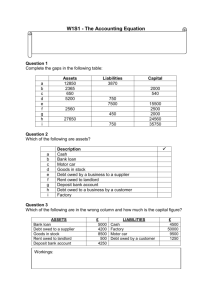CorpFin 2023, Solutions, Sample of questions from old Midterm exams, v2
advertisement
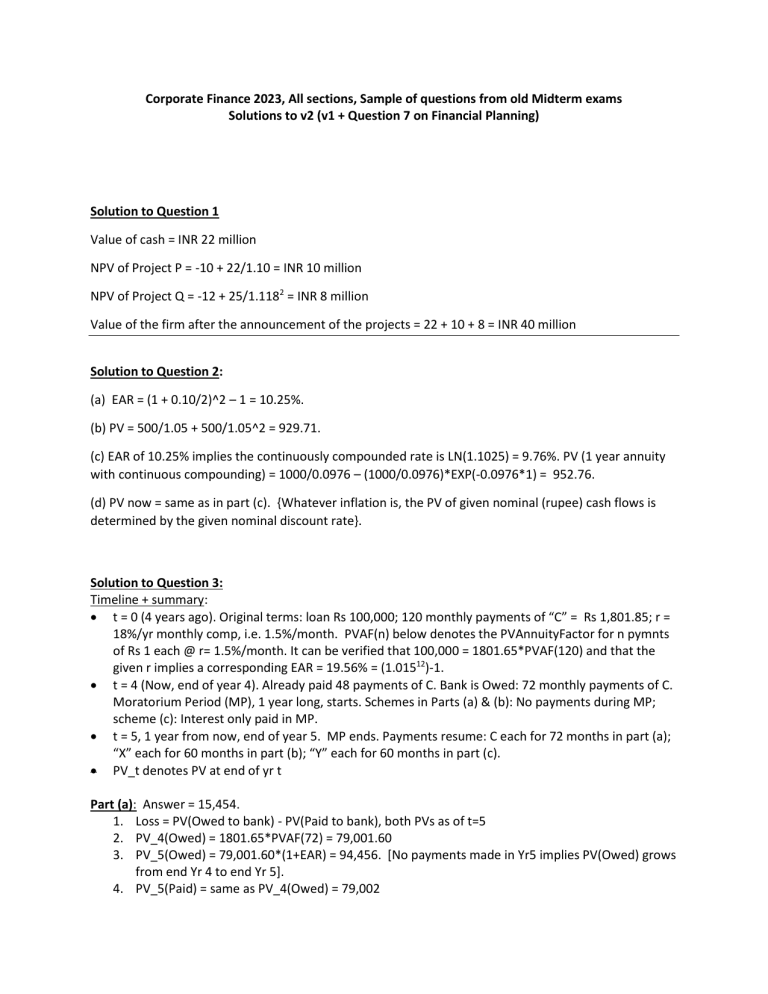
Corporate Finance 2023, All sections, Sample of questions from old Midterm exams
Solutions to v2 (v1 + Question 7 on Financial Planning)
Solution to Question 1
Value of cash = INR 22 million
NPV of Project P = -10 + 22/1.10 = INR 10 million
NPV of Project Q = -12 + 25/1.1182 = INR 8 million
Value of the firm after the announcement of the projects = 22 + 10 + 8 = INR 40 million
Solution to Question 2:
(a) EAR = (1 + 0.10/2)^2 – 1 = 10.25%.
(b) PV = 500/1.05 + 500/1.05^2 = 929.71.
(c) EAR of 10.25% implies the continuously compounded rate is LN(1.1025) = 9.76%. PV (1 year annuity
with continuous compounding) = 1000/0.0976 – (1000/0.0976)*EXP(-0.0976*1) = 952.76.
(d) PV now = same as in part (c). {Whatever inflation is, the PV of given nominal (rupee) cash flows is
determined by the given nominal discount rate}.
Solution to Question 3:
Timeline + summary:
• t = 0 (4 years ago). Original terms: loan Rs 100,000; 120 monthly payments of “C” = Rs 1,801.85; r =
18%/yr monthly comp, i.e. 1.5%/month. PVAF(n) below denotes the PVAnnuityFactor for n pymnts
of Rs 1 each @ r= 1.5%/month. It can be verified that 100,000 = 1801.65*PVAF(120) and that the
given r implies a corresponding EAR = 19.56% = (1.01512)-1.
• t = 4 (Now, end of year 4). Already paid 48 payments of C. Bank is Owed: 72 monthly payments of C.
Moratorium Period (MP), 1 year long, starts. Schemes in Parts (a) & (b): No payments during MP;
scheme (c): Interest only paid in MP.
• t = 5, 1 year from now, end of year 5. MP ends. Payments resume: C each for 72 months in part (a);
“X” each for 60 months in part (b); “Y” each for 60 months in part (c).
• PV_t denotes PV at end of yr t
Part (a): Answer = 15,454.
1. Loss = PV(Owed to bank) - PV(Paid to bank), both PVs as of t=5
2. PV_4(Owed) = 1801.65*PVAF(72) = 79,001.60
3. PV_5(Owed) = 79,001.60*(1+EAR) = 94,456. [No payments made in Yr5 implies PV(Owed) grows
from end Yr 4 to end Yr 5].
4. PV_5(Paid) = same as PV_4(Owed) = 79,002
5. Loss = (3) – (4) = 15,454.
Multiple other equivalent approaches (which may overlap each other) are possible: three such are
below:
• Loss = interest lost over year 5 on PV_4(Owed) = 79,001.60*EAR = 15,454 (shortest approach)
• Loss = PV pymnts not made in yr 5 – PV pymnts made in yr 11 (with PVs as of t=5)
= 1801.65*PVAF(12)*(1+EAR) - [1/((1+EAR)5)]*1801.65*PVAF(12) = 23,498.33 – 8,044.18 = 15,454
• From 100K, subtract PV at t=0 of 1st 48 pymnts received, to get 38,660. Delay means effectively lose
interest on this for 1 year (@ EAR of 19.56%) whose PV at t=1 is 7,563. Its FV at t=5 of
7563*(1+ear)^4 = 15,454.
Part (b): Answer X = 2,398.56. Multiple approaches possible; one such is below.
1. Reset pymnts of X each must be such that FV_10(60 of X paid to bank) = FV_10(Owed to bank)),
since liability must be cleared as of end yr 10. Discounting the FVs above to t=5, need to solve
X*PVAF(60) = PV_5(owed).
2. Note last is equivalent to student gain/loss = 0 in PV terms.
3. PV_5(Owed) = 94,456 (from part a)
4. Thus, X = 79,002*1.015^12/PVAF(60) = 94,455.75/39.3803 = 2,398.56
Part (c): Answer Y = 2,006.12. Multiple approaches possible; one such is below.
1. Pymnts of Y each must be such that PV_5(60 of Y paid to bank) = PV_5(Owed to bank, new), since
student must neither gain nor lose (both PVs are as of end of yr 5).
2. I.e. need to solve Y*PVAF(60) = PV_5(owed, new)
3. PV_5(Owed to bank, new), i.e. Principal owed as of end of yr 5 = PV(Owed as of end yr 4) from part
(a) of 79,001.60. This is because “Outstanding principal stays unchanged from the start of year 5 to
the end of year 5”, since only (full) interest and is paid each month and no principal is paid during
the Moratorium Period; i.e. only 1.5%*79,001.60 is paid each month in year 5.
Solution to Question 4: Suppose the face value of the bond is F = $100. (The % rate of return answer is
the same whatever F value you choose, say 1,000). Then, the bond investor was promised each year, for
five years, fixed coupon payments of 10% of the face value which is: C = 100*0.10 = $10. He is also
promised the face value =$100 at the end of five years.
The AAA bond price at 5% yield is:
𝑃0 =
𝐶
1
𝐹
10
1
100
=
= 121.65
[1 −
]+
[1 −
]+
5
5
5
(1 + 𝑟)
(1 + 𝑟)
(1.05)
(1.05)5
𝑟
0.05
Once the yield increases to 7%, the bond price falls today. Note that the bond now matures not in five
but four years. Its new price which the investor gets is:
𝑃0 =
10
1
100
+
= 110.16
[1 −
]
(1.07)4
(1.07)4
0.07
Additionally, the investor receives a fixed cash flow of $10 as coupon. Hence the rate of return reaped
by the bondholder is:
rate of Return = ((110.16– 121.65) + 10)/121.65 = -0.0122 or -1.22%.
Solution to Question 5:
(a) P(0) = D(1)/(r – g) = 3/(0.25 – 0.05) = 15.
(b) E1 = D1_old/payout_old = 3/0.75 = 4. D1_new = E1*payout_new = 4*0.5 = 2.
ROE = g_old/(1 – payout_old) = 5%/(1 – 75%) = 20%.
g_new = ROE*(1 – payout_new) = 0.2*(1 – 50%) = 10%. P0_new = D1/(r – g) = 2/(0.25 – 0.1) = 13.33.
(c) E1 of B = (D1 of 3)/(payout of 5/6) = 3.6. D1_new of B = (E1 of 3.6)*(payout of 50%) = 1.8.
ROE of B = g_old/(1 – payout_old of B) = 5%/(1 – (5/6)) = 30%.
g_new = ROE*(1 – payout_new) = 0.3*(1 – 50%) = 15%. P0_new of B = D1/(r – g) = 1.8/(0.25 – 0.15) = 18.
{Aside: B’s old P0 = 3/(0.25 – 0.05) = 15 = same as P0_old of A}.
(d) Different. PriceChg_B is > 0 whereas PriceChg_A is < 0.
(e) ROE A < r. Whereas ROE of B > r. Hence, announcement of more aggressive growth leads to the stock
price reflecting PVGO for A that is < 0. For B, this PVGO of B is > 0.
Solution to Question 6: DSO = DAYS Sales Outstanding = Collection Period
Rs/lakhs
Annual Sales
2400
Current DSO
45
Current AR
300
Proposed DSO
30
Proposed AR
200
Redn in AR
100
Opportunity Cost of Capital
0.1
Savings in financial costs of AR
10
Costs
10
Net benefits
0
Annual Sales - Current
2400
Annual Sales - Proposed
3000
Current DSO
45
Current AR
300
Proposed DSO
60
Proposed AR
500
Increase in AR due to new sales
100
VC / Sales
0.75
Increase in AR investment due to new sales
75
Solution to Question 7:
Income statement
Net sales
COGS (60%)
Gross profit
SGA
PBDIT
Depreciation
Interest
PBT
Tax (50%)
PAT
Q1: April-June,
April'15-March'16
2016
300
60.00
180
36.00
120
24.00
24
6.00
96
18.00
2
0.75
2
2.64
92
14.61
46
7.31
46
7.31
Balance sheet
Cash
Receivables
Inventory
NFA
Total assets
31st March, 2016
30th June, 2016
10
10.00
108
60.00
30
30.00
30
39.25
178
139.25
A/c payable
Bank: cash credit
Accrued tax
Provision for dividend
Long term debt, current
portion
Long term debt
Shareholders' equity
Total liability and equity
Trial assets
Trial liabilities
Trial liabilities - Trial assets
Cash
Bank - cash credit
18
18
26
4
10.00
14.14
-4.20
0.00
8
52
52
178
8.00
52.00
59.31
139.25
129.25
125.11
-4.14
10
14.14
CASH BUDGET
Cash receipts:
Collections
Cash payments:
Payment for raw material purchases
COGS, net of purchases
Tax payment
Payment for equipment
Interest paid
Dividends paid
SGA
Cash outflow
Net cashflow
Beginning cash
Total cash before loan repayment
Minimum cash requirement
Balance available for cc loan repayment
Beginning bank cash credit outstanding
Bank cc repayment
Ending bank cc loan balance
End of quarter cash balance
108
38
6
37.5
10
2.64
4
6
104.14
3.86
10
13.86
10
3.86
18
3.86
14.14
10
